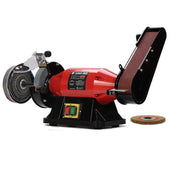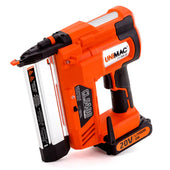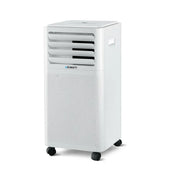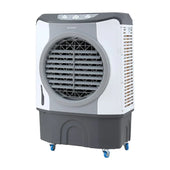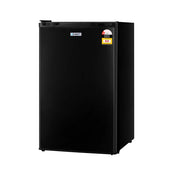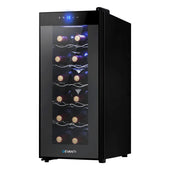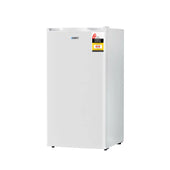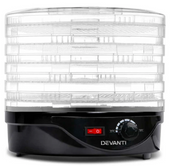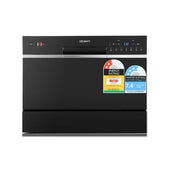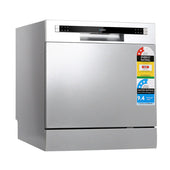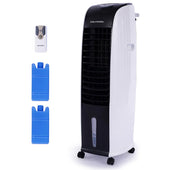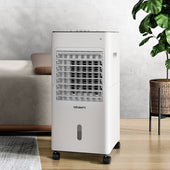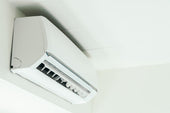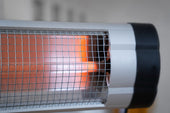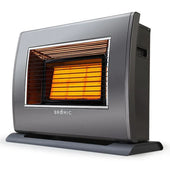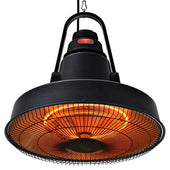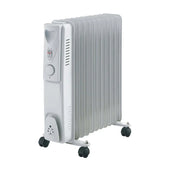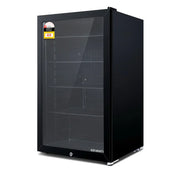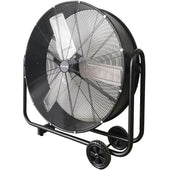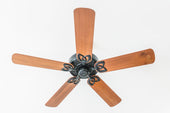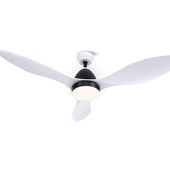Introduction to Choosing the Right Ceiling Fan Size
Determining the proper size of a ceiling fan is crucial for optimising both comfort and functionality in any room. The size of the fan directly impacts airflow efficiency, cooling effectiveness, and aesthetic proportion. Ceiling fan sizes are measured by their blade sweep, which is the diameter of the blade span. Factors such as room dimensions, ceiling height, and intended usage all play significant roles in selecting the most suitable fan size. For smaller spaces, compact fans are preferable, whereas large or open areas demand larger models to circulate air effectively. Understanding these considerations ensures the right fan complements the room's needs and style seamlessly.
Why Ceiling Fan Size Matters for Comfort and Efficiency
Ceiling fan size significantly influences both comfort and energy efficiency in a room. At During Days, we understand that a fan that is too small may struggle to distribute air effectively, leading to uneven cooling or heating. Conversely, an oversized fan can create overwhelming airflow, causing discomfort and excessive noise.
Room dimensions are critical when selecting a fan size, as larger rooms require wider blade spans to circulate air efficiently. Proper sizing ensures optimal coverage and energy savings, reducing dependency on air conditioning or heating systems.
Blade pitch and motor power also influence performance, with larger fans typically needing stronger motors for effective operation. Choosing the correct fan size creates a balanced atmosphere, enhancing comfort while minimising energy costs.
Measuring Your Room: Understanding Dimensions and Proportions
Accurate room measurements are crucial to ensure selecting the right ceiling fan size. Begin by identifying the length, width, and ceiling height of the space. Use a tape measure and note down each dimension. Room proportions play a vital role because they affect airflow distribution.
For rectangular or square rooms, calculate the total square footage by multiplying the length by the width. For irregularly shaped areas, segment the space into smaller rectangles, measure each section, and sum the results.
Ceiling height determines the type of mount required for the fan. Ceiling fans should maintain at least 7 feet of clearance from the floor and be mounted securely. Consider additional factors such as furniture placement or obstructions for optimal positioning.
Standard Ceiling Fan Sizes and Their Ideal Room Applications
Ceiling fan sizes are typically categorised based on their blade span, measured in inches, and each is suited to particular room dimensions. Choosing the correct size ensures optimal airflow and functional performance.
Common Ceiling Fan Sizes
- Small (29–36 inches): Best for compact spaces like bathrooms, walk-in closets, or small utility rooms under 75 square feet.
- Medium (42–48 inches): Ideal for kitchens, dining rooms, or bedrooms between 75–175 square feet.
- Large (52–56 inches): Suitable for larger bedrooms, living rooms, or patios sized between 175–400 square feet.
- Extra-Large (60 inches or more): Designed for expansive areas like open-concept living spaces or large recreational rooms over 400 square feet.
Fan size selection must align with both room dimensions and ceiling height to maximise efficiency.
Choosing Fan Sizes for Small Rooms and Compact Spaces
Selecting the appropriate ceiling fan for small rooms or compact spaces requires careful consideration of blade span and airflow efficiency. Fan sizes between 29 to 36 inches are typically ideal for rooms under 75 square feet, such as bathrooms, laundry areas, or walk-in closets.
Key Factors to Consider:
- Blade Span: A fan with a shorter blade span ensures sufficient circulation without overpowering a confined area.
- Height Clearance: Fans in small rooms benefit from low-profile models for better ceiling clearance.
- Airflow Efficiency: Consider fans with high CFM ratings relative to blade size for optimised performance.
Compact fans often blend functionality with design, fitting seamlessly into tight spaces while providing adequate comfort.
Optimal Fan Sizes for Medium-Sized Living Areas
Medium-sized living areas, such as lounges, family rooms, or small dining spaces, typically benefit from ceiling fans with blades spanning 44 to 52 inches. This range effectively balances airflow circulation without overpowering the room aesthetically or functionally.
For spaces measuring approximately 144 to 225 square feet, a ceiling fan with a 48- to 52-inch blade span is ideal. Such dimensions ensure consistent air movement, promoting comfort during both warm and cool seasons. Selecting the correct size avoids creating uneven airflow and helps maintain energy-efficiency.
When ceiling height is a concern, consider fans with adjustable downrods or low-profile models to maximise performance. Using well-proportioned fans not only aligns with room dimensions but also complements interior design.
Selecting Ceiling Fans for Large Rooms and Open Spaces
When choosing ceiling fans for large rooms or open-plan areas, size plays a crucial role in ensuring efficient air circulation. Rooms exceeding 400 square feet typically require fans with blade spans of 52 inches or more. For spaces like living rooms, great rooms, or combined kitchen-dining areas, consider the following factors:
- Fan Size: Use fans ranging between 56 to 60 inches for ample airflow. For expansive spaces, dual ceiling fans may be necessary.
- Ceiling Height: Rooms with tall ceilings benefit from downrods to position the fan at the optimal height for air circulation.
- CFM (Cubic Feet per Minute): Choose a fan with a higher CFM rating to maintain airflow in large areas effectively.
Properly sized fans ensure comfort and energy efficiency in larger spaces.
Ceiling Fan Recommendations for High Ceilings and Vaulted Rooms
High ceilings and vaulted rooms often require specialised ceiling fans to ensure adequate air circulation. These spaces benefit from fans with extended downrods to bring the blades closer to the living area. Downrods are available in various lengths, with options typically ranging from 12 to 72 inches. Choosing the appropriate downrod length is crucial for optimal airflow.
When selecting a fan, look for models with powerful motors designed to generate sufficient airflow for larger spaces. Blades with a larger diameter, often 60 inches or more, are ideal for these rooms. Fans with energy-efficient DC motors are recommended for quieter operation and reduced energy consumption.
Outdoor Ceiling Fans: Sizing for Patios, Decks, and Gazebos
Selecting the right size outdoor ceiling fan ensures adequate airflow in patios, decks, or gazebos. The size depends on the area’s square footage and height. For smaller outdoor spaces up to 144 square feet, fans with blade spans of 29-36 inches work effectively. Medium spaces measuring 144-324 square feet benefit from 42-50 inch fans. For larger areas, 56 inches or more is ideal.
Ensure outdoor fans have a damp or wet rating to withstand moisture. Wet-rated fans are essential for fully exposed spaces, while damp-rated fans suit areas with partial cover. Proper sizing contributes to comfort and energy efficiency across outdoor living spaces.
Special Cases: Multiple Ceiling Fans for Oversized Spaces
In rooms with expansive dimensions, one ceiling fan may not suffice to ensure adequate air circulation. Larger spaces such as banquet halls, open-plan living areas, or oversized commercial zones often benefit from the use of multiple ceiling fans.
Key Considerations
- Alignment and Placement: Ceiling fans should be evenly spaced to avoid uneven cooling or airflow gaps. Aim to centre each fan over distinct zones or seating areas.
- Fan Size and Style: Choose fans proportionate to the size of each zone and ensure they complement the existing décor. Opt for models designed for high airflow efficiency.
- Electrical Load: Verify the capacity of the wiring layout to accommodate multiple fans safely without overloading circuits.
Proper distribution ensures maximum comfort across the entire area.
Understanding Blade Span and Airflow Efficiency Ratings
Blade span refers to the diameter of the ceiling fan when measured across the tips of the blades. It determines the amount of space a fan can effectively cool and influences the fan's suitability for different room sizes.
Airflow efficiency ratings measure how effectively a fan moves air relative to its power consumption. Ratings are expressed as cubic feet per minute (CFM) per watt. Higher efficiency ratings indicate better performance and energy savings.
When choosing a fan, one must consider the room size, blade span, and efficiency rating. Larger rooms typically require fans with wider blade spans and higher CFM values for optimal circulation.
Factors Affecting Ceiling Fan Size, Including Furniture Layout
Choosing the right ceiling fan size relies on multiple factors, including the dimensions of the room, placement of furniture, and overall layout.
- Room Dimensions: The length, width, and height of the room primarily determine the fan's blade span. Larger rooms typically require fans with a broader span.
- Furniture Placement: Furniture layout influences airflow efficiency. A balanced arrangement around the fan’s central position ensures optimal air circulation.
- Ceiling Height: Low ceilings may need flush-mount fans, while higher ceilings might require downrods.
- Purpose of the Room: A dining room may need a quieter fan to enhance comfort, whereas living areas require broader coverage.
Airflow distribution and safety clearances are critical when considering furniture arrangements and fan size.
Ceiling Fan Downrod Length Considerations for Proper Installation
Choosing the correct downrod length for a ceiling fan is essential to ensure optimal performance and safety. Downrod length is determined based on the ceiling height, as it impacts airflow efficiency and comfort levels. A well-positioned fan should ideally hang 2.4 to 2.7 metres above the floor for adequate circulation and safety clearance.
Key Guidelines for Downrod Selection:
- Ceiling Height:
- For ceilings under 2.4 metres, consider flush-mounted or low-profile fans.
- Ceilings between 2.4 and 2.7 metres typically require a standard downrod (approx. 15-30 cm long).
- Higher ceilings (3+ metres) demand longer downrods, up to 1 metre or more.
- Room Types:
- Taller ceilings, such as in vaulted or cathedral rooms, may need custom downrods.
Correct downrod sizing also prevents wobbling or strain on the fan's motor.
Frequently Asked Questions About Ceiling Fan Sizes
What size ceiling fan is best for small rooms like bedrooms or kitchens?
For small rooms up to 75 square feet, ceiling fans with blade spans of 29 to 36 inches are recommended. These fans provide adequate airflow without overpowering the space.
Can larger ceiling fans work in small rooms?
Large ceiling fans can be used in small rooms but may create excessive air movement or look disproportionate. Always measure the room and choose a fan size that aligns with the room’s dimensions.
How does ceiling height impact fan size?
High or vaulted ceilings may require larger fans for airflow effectiveness, while low ceilings benefit from flush-mount fans to maintain appropriate clearance.
Are outdoor ceiling fans sized differently?
Outdoor fans should match the space size and consider coverage required for porches or patios. Weather-resistant options ensure longevity in exposed areas.
Do fan blades impact airflow regardless of size?
Blade pitch and material can influence airflow distribution. Short blades with higher angles may circulate air more efficiently than longer, flatter ones.
Conclusion: Achieving Comfort and Style with the Right Ceiling Fan Size
Selecting the appropriate ceiling fan size ensures optimal air circulation while complementing the room’s aesthetics. Proper sizing depends on factors such as room dimensions, ceiling height, and layout. Fans ranging from 29 to 36 inches are suitable for compact spaces like kitchens, whereas 52-inch fans are ideal for standard bedrooms or living rooms. Larger areas benefit from fans exceeding 56 inches, ensuring wide coverage without overpowering the décor.
Additionally, placement plays a crucial role in performance. Installing the fan at least 7 feet above the floor and maintaining a safe distance from walls enhances effectiveness. Strategic choices balance efficiency with visual harmony.


